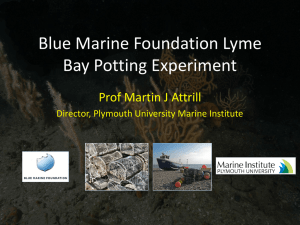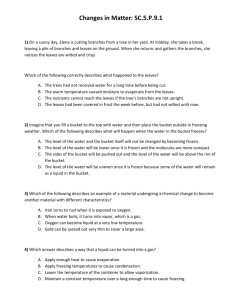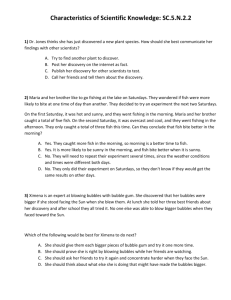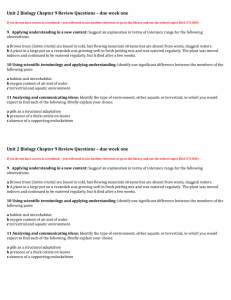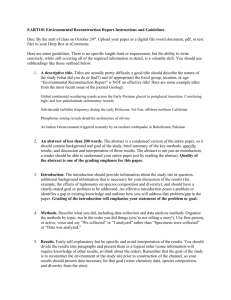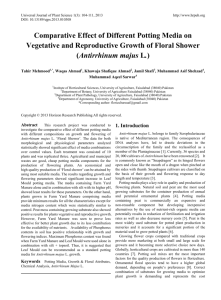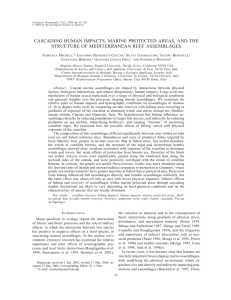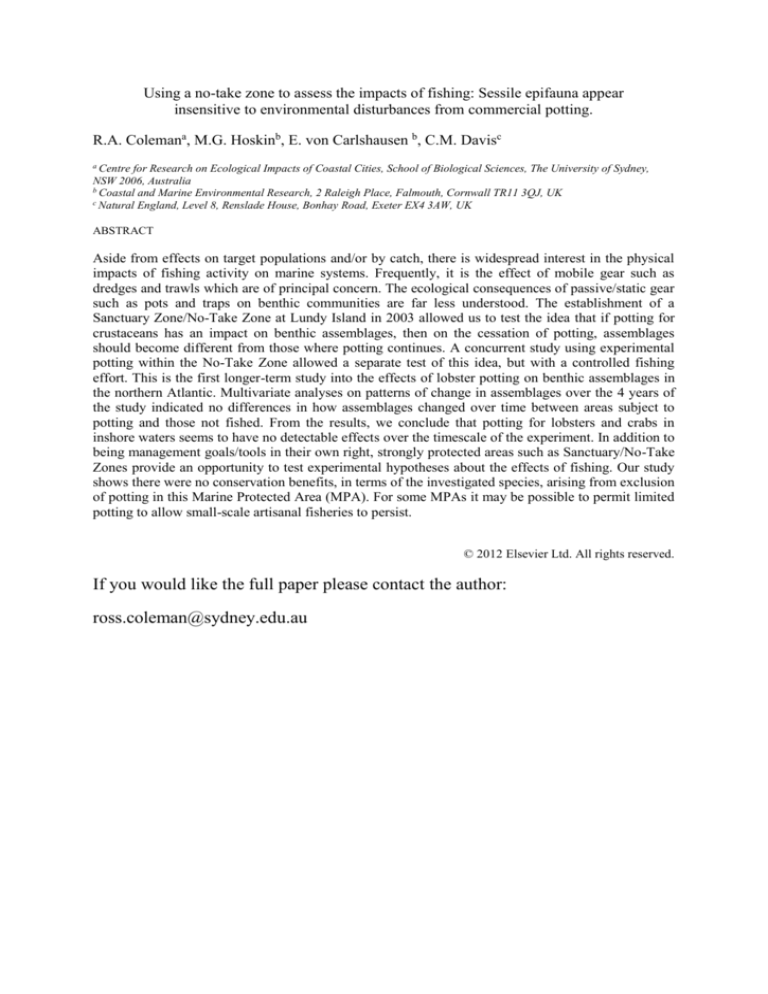
Using a no-take zone to assess the impacts of fishing: Sessile epifauna appear
insensitive to environmental disturbances from commercial potting.
R.A. Colemana, M.G. Hoskinb, E. von Carlshausen b, C.M. Davisc
a Centre
for Research on Ecological Impacts of Coastal Cities, School of Biological Sciences, The University of Sydney,
NSW 2006, Australia
b Coastal and Marine Environmental Research, 2 Raleigh Place, Falmouth, Cornwall TR11 3QJ, UK
c Natural England, Level 8, Renslade House, Bonhay Road, Exeter EX4 3AW, UK
ABSTRACT
Aside from effects on target populations and/or by catch, there is widespread interest in the physical
impacts of fishing activity on marine systems. Frequently, it is the effect of mobile gear such as
dredges and trawls which are of principal concern. The ecological consequences of passive/static gear
such as pots and traps on benthic communities are far less understood. The establishment of a
Sanctuary Zone/No-Take Zone at Lundy Island in 2003 allowed us to test the idea that if potting for
crustaceans has an impact on benthic assemblages, then on the cessation of potting, assemblages
should become different from those where potting continues. A concurrent study using experimental
potting within the No-Take Zone allowed a separate test of this idea, but with a controlled fishing
effort. This is the first longer-term study into the effects of lobster potting on benthic assemblages in
the northern Atlantic. Multivariate analyses on patterns of change in assemblages over the 4 years of
the study indicated no differences in how assemblages changed over time between areas subject to
potting and those not fished. From the results, we conclude that potting for lobsters and crabs in
inshore waters seems to have no detectable effects over the timescale of the experiment. In addition to
being management goals/tools in their own right, strongly protected areas such as Sanctuary/No-Take
Zones provide an opportunity to test experimental hypotheses about the effects of fishing. Our study
shows there were no conservation benefits, in terms of the investigated species, arising from exclusion
of potting in this Marine Protected Area (MPA). For some MPAs it may be possible to permit limited
potting to allow small-scale artisanal fisheries to persist.
© 2012 Elsevier Ltd. All rights reserved.
If you would like the full paper please contact the author:
ross.coleman@sydney.edu.au

